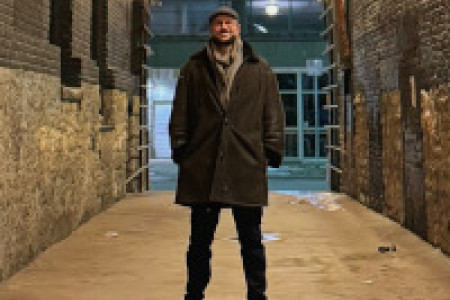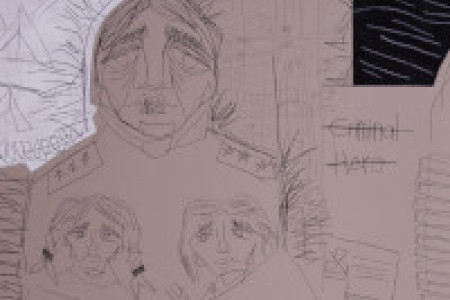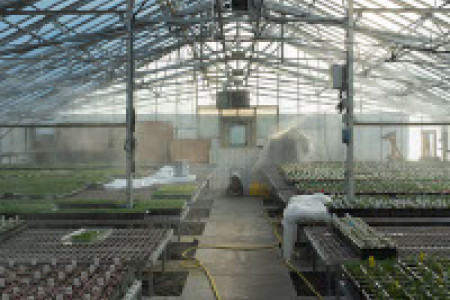Ecological urban infrastructure
How do we design cities to sustain life?
About 25 years ago I attended an ecology conference in a city in the south of Spain, and it is funny that the thing I remember the most was a walk through a parking lot. This was the first time, and one of the only times, I felt something as intrusive as a parking lot could be part of an integrated urban ecosystem.
It was a simple enough idea. “Green” corridors had been designed to be part of the urban grid. It turns out that these corridors could serve a number or purposes, or as some people would say today, provide a number of ecosystem services: onsite water retention, a tree canopy for sheltering pedestrians and cyclists alike, and less apparently an interconnected network for the flow of plants and animals across a parking lot – in a sense allowing the parking lot to become part of a living landscape.
Since that time I have understood cities differently, and I have been concerned with how cities rest within living landscapes, how we may begin to think about urban ecosystems and what we would call ecological infrastructures.
When we usually think about urban infrastructure we are often concerned with networks (telephone, road, gas, electricity, water), their connectivity, their bundling, their distribution and so on. Different infrastructures can be understood in regards to their own spatial requirements related to types, qualities and quantities of flows (just think of the differences between road networks and water networks), and that each type of infrastructure performs and suffers in its own ways from disturbances (potholes and frozen pipes, for example). This is often associated with the nature of the materials being carried and the design of the system itself. So what does this have to do with an ecological urban infrastructure?
Ecological urban infrastructures may be thought of as metabolic systems: they are systems that maintain life – described here in a broad sense in terms of a large mix of human and non-human actors – within a city. When designing cities the networks of ecosystems should be respected in the same way we respect other networks. We have to understand the nature of the flows, we have to understand the “needs” of the flows, we have to give the systems the space and connectivity (contiguity) they require. This is probably one of the greatest problems of good urban design; how do we mesh living, fluctuating flows, with non-living systems? How do we support the health and emergence of ecological processes and ecosystem services within an integrated urban fabric? To this end students in my graduate design studio proposed the following definition: Ecological infrastructure is the organizational framework that meshes ecological processes and ecosystem services into the urban fabric.
Over the past decade urban designers have been trying to develop new ways of thinking about integrated urban ecosystem design. These projects happen at many scales, from the garden to the territory. In what follows I would like to mention some large-scale urban design projects that are commonly referred to as landscape urbanism. Landscape urbanism projects include the well documented High Line, a linear park built on an approximately two kilometer section of elevated abandoned railway and Freshkills Park, a redevelopment of a sanitary landfill site. Both projects have been undertaken in New York City by the landscape architecture firm Field Operations (www.fieldoperations.net). The projects are dramatic, expansive and imaginative in how they attempt to bring “nature” back into a major metropolitan area, and how they attempt to weave natural elements through an urban structure. Both projects focus on replacing, in whole or in part, existing urban infrastructure with an ecologically oriented alternative.
Another important example of creative re-use of deteriorating infrastructure is the spectacular Landschaftspark (http://en.landschaftspark.de/startseite) in Duisburg-Nord, Germany, designed by landscape architects Latz and Partners. The design of this park focuses upon the remediation of an abandoned industrial site and re-use of the factory for a wide range of activities, including “rock” climbing (on the side of the factory), scuba diving (in huge water treatment tanks), and a concert venue in the factory itself. The park has been significant in changing the image of the city from an industrial centre to a centre of creativity and tourism.
Winnipeg has similar potential, and we should all be thinking about creating linear parkways rather than housing on abandoned railways, and seeing deteriorating factories and landfills as important sites for the building of creative alternative experiences. We should also be thinking about how we can reduce the impact of urban fragmentation due to our existing infrastructures.
An alternative approach to developing ecological infrastructure is in the work of the Paris-based landscape architecture firm Agence Ter. In its work the landscape is treated as a platform that informs the shape of the city. “Landscape oriented urbanism implies working with the complexity of the city and finding the intelligence of its territory and the convergences between its elements in order to set up a dialog between the city and its platform.” For Agence Ter this territory refers to natural and human made systems. One of its most successful strategies is what it refers to as domesticating major infrastructures. This means reconciling the fragmentation which has resulted from big infrastructure moves (freeways, rail yards), by finding ways to make infrastructure and/or its periphery more habitable by creating public places that unify people within their landscapes, and by designing pleasant livable neighborhoods.
To design sustainable cities means to think with and beyond common metaphors regarding carbon footprint, energy conservation, waste and water management, and contemporary notions of urban infrastructure. Ideas of sustainability and infrastructure must be extended beyond human-centered concerns, to concerns about how we sustain life (defined more broadly)? How do we design cities to sustain life?
Professor Richard Perron (PhD), teaches in the department of landscape architecture at the University of Manitoba.
Part of the series: The Urban Issue 2014
Published in Volume 68, Number 25 of The Uniter (March 27, 2014)

-cmyk-web_1100_595_90.jpg)
-cmyk-web_1100_595_90.jpg)





